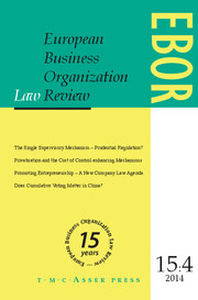Article contents
Bond Covenants and Creditor Protection: Economics and Law, Theory and Practice, Substance and Process
Published online by Cambridge University Press: 21 June 2006
Abstract
This article examines contractual protection of unsecured financial creditors in US credit markets. Borrowers and lenders in the United States contract against a minimal legal background that imposes the burden of protection on the lender. A working, constantly updated, set of contractual protections has emerged in response. But actual use of available contractual technology varies widely, depending on the level of risk and the institutional context. The credit markets sort borrowers according to the degree of the risk of financial distress, imposing substantial constraints only on the borrowers with the most dangerous incentives. At the same time, the contracting practice is sticky and lumpy, never quite managing to conform to the predictions of first generation agency theory. Levels of protection vary with institutional contexts. Exhaustive contracts providing something approaching complete protection against agency costs prove feasible only in relational contexts conducive to ongoing renegotiation over time due to small numbers of lenders operating under reputational constraints. The public bond markets do not hold out such a process context, and accordingly shut out the riskiest borrowers. The larger, less risky firms that do gain access to the bond markets borrow under contracts offering incomplete protection, with the level of protection roughly correlating to the borrower's risk level. This leaves bondholders confronting a residuum of agency costs and relying on secondary protections like monitoring, exit, diversification, and hedging. This has worked reasonably well in practice, subject to an historical exception concerning the risk of high-leverage restructuring. The bond markets searched for two decades for a stable solution to this problem, finally settling on across-the-board contractual protection only in recent years.
Keywords
- Type
- Articles
- Information
- Copyright
- T.M.C. Asser Press 2006
- 38
- Cited by


